
A pilgrimage is a journey to a holy place, which can lead to a personal transformation, after which the pilgrim returns to their daily life. A pilgrim is a traveler who is on a journey to a holy place. Typically, this is a physical journey to some place of special significance to the adherent of a particular religious belief system.
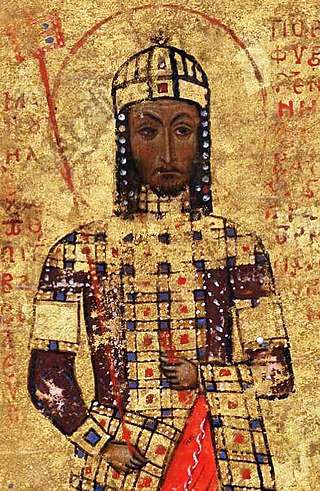
Manuel I Komnenos, Latinized as Comnenus, also called Porphyrogenitus, was a Byzantine emperor of the 12th century who reigned over a crucial turning point in the history of Byzantium and the Mediterranean. His reign saw the last flowering of the Komnenian restoration, during which the Byzantine Empire experienced a resurgence of military and economic power and enjoyed a cultural revival.
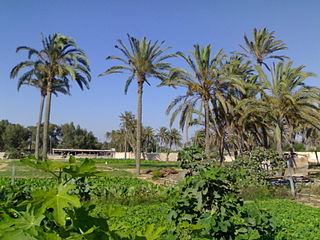
Awjila is an oasis town in the Al Wahat District in the Cyrenaica region of northeastern Libya. Since classical times it has been known as a place where high quality dates are farmed. Since the Arab conquest in the 7th century, Islam has played an important role in the community. The oasis is located on the east-west caravan route between Egypt and Tripoli, Libya, and the north-south route between Benghazi and the Sahel between Lake Chad and Darfur. In the past, it was an important trading center. The people cultivate small gardens using water from deep wells. Recently, the oil industry has become an increasingly important source of employment.

The Middle East, also known as the Near East, is home to one of the Cradles of Civilization and has seen many of the world's oldest cultures and civilizations. The region's history started from the earliest human settlements and continues through several major pre- and post-Islamic Empires to today's nation-states of the Middle East.

William Benedict Hamilton-Dalrymple is an India-based Scottish historian and art historian, as well as a curator, broadcaster and critic. He is also one of the co-founders and co-directors of the world's largest writers' festival, the annual Jaipur Literature Festival. He is currently a Visiting Fellow at All Souls College, Oxford.
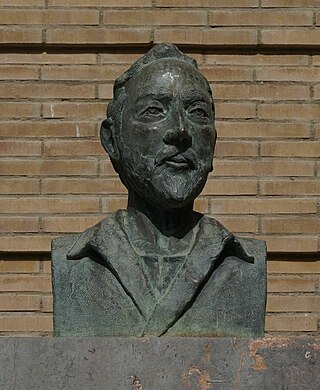
Benjamin of Tudela, also known as Benjamin ben Jonah, was a medieval Jewish traveler who visited Europe, Asia, and Africa in the twelfth century. His vivid descriptions of western Asia preceded those of Marco Polo by a hundred years. With his broad education and vast knowledge of languages, Benjamin of Tudela is a major figure in medieval geography and Jewish history.

Sophronius, called Sophronius the Sophist, was the Patriarch of Jerusalem from 634 until his death. He is venerated as a saint in the Eastern Orthodox and Catholic Churches. Before rising to the primacy of the see of Jerusalem, he was a monk and theologian who was the chief protagonist for orthodox teaching in the doctrinal controversy on the essential nature of Jesus and his volitional acts. He is also renowned for negotiation of surrender of Jerusalem to the Muslim caliph Umar ibn al-Khattab.

Ted Conover is an American author and journalist who has been called a "master of immersion" and "master of experience-based narrative nonfiction." A graduate of Amherst College and a former Marshall Scholar, he is also a professor and past director of the Arthur L. Carter Journalism Institute of New York University. He teaches graduate courses in the New York University Literary Reportage concentration, as well as undergraduate courses on the "journalism of empathy" and undercover reporting.

Saidnaya is a city located in the mountains, 1,500 m (4,900 ft) above sea level, 27 km (17 mi) north of the city of Damascus in Syria. It is the home of a Greek Orthodox monastery traditionally held to have been founded by Byzantine emperor Justinian I, and where a renowned icon of the Virgin Mary is revered by both Christians and Muslims to this day. According to the Syria Central Bureau of Statistics (CBS), Saidnaya had a population of 25,194 in the 2004 census.
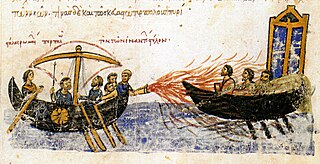
The Arab–Byzantine wars were a series of wars from the 7th to 11th centuries between multiple Arab dynasties and the Byzantine Empire. The Muslim Arab Caliphates conquered large parts of the Christian Byzantine empire and unsuccessfully attacked the Byzantine capital of Constantinople. The frontier between the warring states remained almost static for three centuries of frequent warfare, before the Byzantines were able to recapture some of the lost territory.
John Moschus, surnamed Eucrates, was a Byzantine monk and ascetical writer of Georgian origin. He is primarily known for his writing of the Spiritual Meadow. The Spiritual Meadow, alongside the Bibliotheca of Photios, are the main sources from which his life is known.
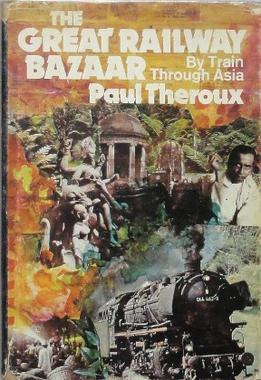
The Great Railway Bazaar: By Train Through Asia is a travelogue by American novelist Paul Theroux, first published in 1975. It recounts Theroux's four-month journey by train in 1973 from London through Europe, the Middle East, the Indian subcontinent and Southeast Asia, and his return via the Trans-Siberian Railway. The first part of the route, to India, followed what was then known as the hippie trail. It is widely regarded as a classic in the genre of travel writing. It sold 1.5 million copies upon release.
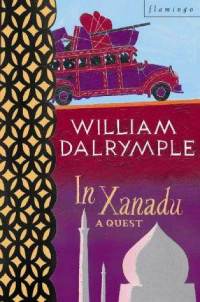
In Xanadu: A Quest is a 1989 travel book by William Dalrymple.

Cornelis Hulsman is a Dutch sociologist who has lived for years in Egypt since 1994. He is currently the editor in chief of the Arab-West Report, which is a report that includes a weekly digest of various Egyptian press outlets. Hulsman is further an expert on Egyptian printed media, The Coptic Orthodox Holy Family's tradition, interfaith relations in Egyptian society, and inter-cultural understanding in the Arab world. Hulsman has been a correspondent for several Dutch media outlets in Egypt, and has been the Secretary-General of the Cairo Foreign Press Association since 2003.

The Eastern Roman (Byzantine) imperial church headed by Constantinople continued to assert its universal authority. By the 13th century this assertion was becoming increasingly irrelevant as the Eastern Roman Empire shrank and the Ottoman Turks took over most of what was left of the Byzantine Empire. The other Eastern European churches in communion with Constantinople were not part of its empire and were increasingly acting independently, achieving autocephalous status and only nominally acknowledging Constantinople's standing in the Church hierarchy. In Western Europe the Holy Roman Empire fragmented making it less of an empire as well.

Salomon Schweigger was a German Lutheran theologian, minister, anthropologist and orientalist of the 16th century. He provided a valuable insight during his travels in the Balkans, Constantinople and the Middle East, and published a famous travel book of his exploits. He also published the first German language translation of the Qur'an.

The Abraham Path is a cultural route believed to have been the path of the patriarch Abraham's ancient journey across the Ancient Near East. The path was established in 2007 as a pilgrims' way to mimic the historical believed route of Abraham, between his birthplace of Ur of the Chaldees, believed by some to have been Urfa, Turkey, and his final destination of the desert of Negev.

Syria is a historical region located east of the Mediterranean Sea in West Asia, broadly synonymous with the Levant. Other synonyms are Greater Syria or Syria-Palestine. The region boundaries have changed throughout history. However, in modern times, the term "Syria" alone is used to refer to the Syrian Arab Republic.

Coptic Egypt: The Christians of the Nile is a 2000 illustrated monograph on Copts and Christian Egypt. Written by the Belgian historian of religion Christian Cannuyer, and published in pocket format by Éditions Gallimard as the 395th volume in their 'Découvertes' collection, in collaboration with the Institut du Monde Arabe.
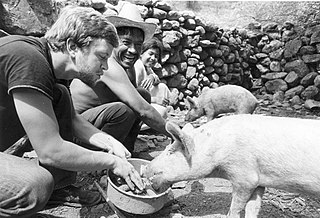
Coyotes: A Journey Across Borders with America's Mexican Migrants is a 1987 nonfiction book by journalist and professor Ted Conover. The book is based on his travels, seasonal labor stints, and participatory journalism research with Mexican migrant workers in the late 1980s. The book was written at a time when American political stances on Mexican migrant workers were becoming increasingly polarized.



















